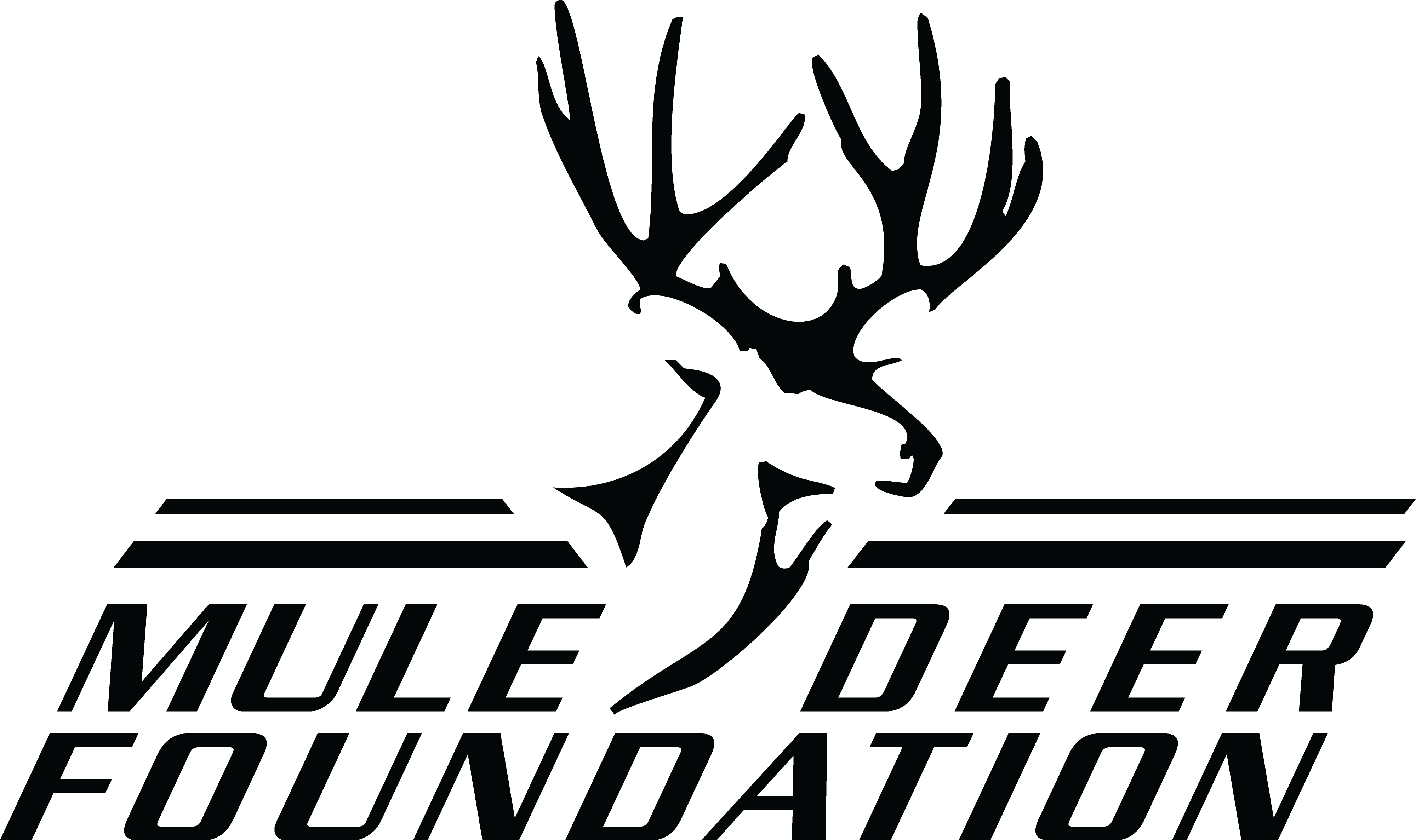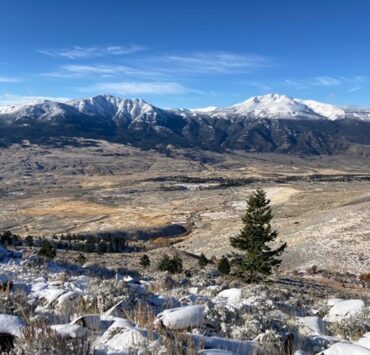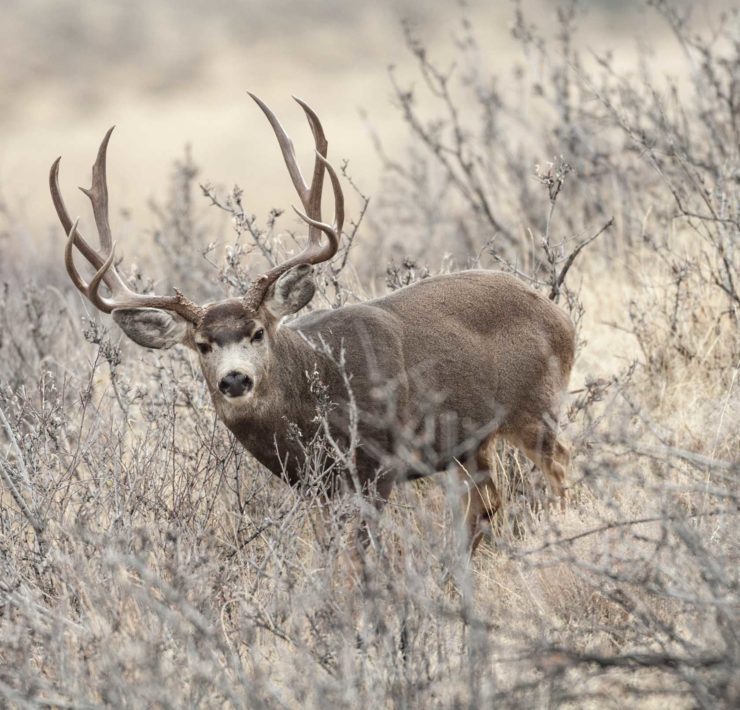Top Summertime Scouting tips for Mule Deer.


Tips on how to find that target buck from a Western Hunting Guide
The Mule Deer Foundation has the pleasure of having some amazing staff on board. One of those staff members is Eric Sharpe who is a mule deer guide in the fall months. We took this opportunity in July to sit down with Eric and interview him on what a perfect hunter whose sole goal in life was to shoot a mature mule deer buck would be doing this summer. Eric came up with some great tips and tricks and we had a great time talking. Read the interview below.
MDF: What do you do?
Eric: I am a guide in Wyoming, Montana, and SD for all big game primarily deer and antelope.
MDF: How long have you been guiding?
Eric: I have been guiding for 8 years, my team and I host 125 clients annually.
MDF: What’s your favorite species to pursue for yourself or clients?
Eric: Species isn’t as important to me as landscape. I am in a 20-year love affair with the great plains. The spot and stalk aspect from miles away that you only find on the prairie is incredible. I love that I can get my people 10+ stalks in a day but really I just love being out there in the tall grass as often as I can be.
MDF: What are the Biggest Critters you have had taken by you or your clients?
Eric: Antelope – 19 ¼ inches in Height, 87 in score, Deer – 174 inches
MDF: What are you doing this time of year to ensure success this fall?
Eric: I am getting in as many early mornings scouting as possible. I am focused on watching bachelor groups, mostly on their entry and exit strategies. Water this time of year is also key for early fall hunting opportunities.
MDF: What landscapes should the DIY Hunter focus their efforts on scouting in the summer?
Eric: In the great plains where I prefer to do my guiding, we are focused on creek bottoms and agriculture tucked away from the heat and wind. North facing slopes are great places to find deer hiding from the weather and wind. The earlier you can get out the better as the deer will be feeding all night before heading back to their bedding areas during the heat of the day. The bucks you see leaving the creek bottoms and agriculture fields at first light are heading to the same areas they will be hiding in early fall. I am looking for places I can get my hunter to best observe those routes to these bedding areas.
MDF: What are the main summer food sources for Mule Deer?
Eric: For me Alfalfa agricultural plots are the best food sources that produce bucks with Wheat fields as a close second option. But really, I focus on water and creek bottoms with wild plums and native plant life. Acorns in the more wooded areas are also critical. Everyone focuses on Ag fields, and they are not wrong but while everyone is watching Ag you can find some separation from the crowd of other hunters by looking at native grasslands and fruits others overlook.
MDF: Is there a way to predict where the big summer bucks will be in the fall?
Eric: The short answer is NO! Deer will always do deer things and creep out on you. That said I cannot overstate the importance of escape routes and food that will be available in early fall. The places the bucks are heading in the morning after feeding all night is where they will be bedding through the pre-rut period. Follow those escape routes and learn where you can set up for maximum visibility and shooting capacity.
MDF: What are the top Summer days or weeks to be in the field scouting?
Eric: Summer is uniform for scouting days so get out whenever you can, some folks highlight moon phases and are religious in tracking the waxing crescents and waning gibbous, etc, but the best results I see are focusing on 10–20-degree temp drops regardless of time of year or moon phase those colder days are critical for quality scouting. If I see the weather switching from 80-degree nights even only 10 degrees, the next few days in the mornings are when I see the most activity.
MDF: What are 3 pieces of gear you always have on you when scouting?
Eric:
1.) Optics – Binoculars are always with me as a guide. I normally carry the Leupold 12 x 50 version of the Santaim model but during summer I sometimes bring out the
15×56 in the same model for additional clarity when looking at bucks in velvet. I usually also have Leupold Spotting scope that clips on my truck window or a tripod. I like the SX-4 Pro Guide HD 20-60x85mm angled lens model.
2.) My Montana Knife company pocketknife never leaves my pocket. I carry the Speed Goat with a 4 inch non-serrated blade.
3.) The biggest advantage for me as a guide is having OnX available whenever I need it. Being able to see and remember landscape level details and cover and concealment is important but knowing where I am and marking landmarks, I can see in the dark without a headlamp on my phone is an incredible advantage.
Shameless Advertisement: Visit https://www.leupold.com , https://www.montanaknifecompany.com, and https://www.onxmaps.com/hunt/app/east to get these critical items for yourself!
MDF: What gear should folks bring that clients always seem to get wrong:
Eric: Proper clothing. All brands are fine, buy what you can afford, but the number of clients I have that show up in September or October with their winter whitetail tree stand coats is insane. We have mornings in October on the prairie where I need my clients to walk 5 to 10 miles and its 75 degrees by 10a.m. Ask the guide you are using for recommendations on weather and gear needed for the area you will be in.
MDF: What is the number one thing your clients can do in the summer to increase their chances of success this fall?
Eric: Weapon preparedness is key. Whether you are using a bow or a rifle you need to be proficient with that weapon system and be honest with me about your capabilities. If you show up with a Remington 700 in .270 from 1974 and can shoot 200 yards, that’s fine, your guide can put you in a position to find success. We just need to know that. It’s the same during archery season, if you are splitting arrows at 40 yards don’t tell me you are comfortable at 60 yards. Be ready and be honest about your skillset and limitations for shooting. The other piece where folks fail is physical fitness. Carry weighted pack for a few months before coming here and break in your feet and your boots.
MDF: How far is far enough in weapon proficiency?
Eric: That will depend on the landscape you are in, but your guide and outfitter will know and have recommendations for you. For me, I want archery clients able to shoot ten arrows in a pie plate at 40 yards when fatigued and rifle clients should be putting 5 holes in that pie plate at 200 yards. I can find clients success with less ability, but they need to be able to make up for their worse shooting by being in better shape physically.
MDF: Biggest piece of advice for future clients:
Eric: Just LISTEN to your guide and let them work. Don’t try to guide the guide. They do this for a living and want you to find success as much as, or more than you do.
Good luck this fall everyone and remember to send any success pictures or stories from the field to [email protected] you could be featured on our website or in our magazine. If this article or any of our articles have helped you become a better hunter or conservation steward, consider becoming a member of the mule deer foundation for only $35 dollars a year. Click here to join: https://muledeer.org/product-category/membership/
Trevor Hubbs

Trevor is the Communications Manager and Editor for the Mule Deer Foundation and Blacktail Deer Foundation. He grew up hunting and fishing the Ozark Mountains for quail, ducks, and bucks. Now he ventures west for mule deer as often as possible.





